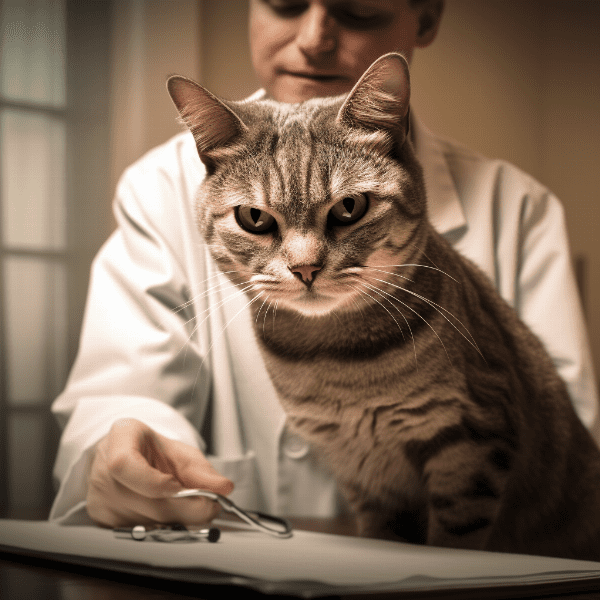Table of Contents
- Understanding Cat Eye Cancer
- Risk Factors for Cat Eye Cancer
- Symptoms of Cat Eye Cancer in Cats
- Diagnosing Cat Eye Cancer
- Treatment Options for Cat Eye Cancer
- Preventing Cat Eye Cancer
- Lifestyle Changes for Reducing Cat Eye Cancer Risk
- Diet and Nutrition for Cat Eye Cancer Prevention
- Regular Checkups and Screenings
- Coping with a Cat’s Eye Cancer Diagnosis
Understanding Cat Eye Cancer
Cat eye cancer, also known as ocular neoplasia, is a type of cancer that affects the eyes of cats. The disease can occur in one or both eyes and can be benign or malignant. While the exact cause of cat eye cancer is unknown, there are certain factors that increase a cat’s risk of developing the disease.
The Anatomy of a Cat’s Eye
Before delving into the details of cat eye cancer, it’s essential to understand the anatomy of a cat’s eye. A cat’s eye is a complex structure made up of several parts, including the cornea, iris, lens, and retina. The cornea is the transparent layer at the front of the eye that covers the iris, pupil, and anterior chamber. The iris is the colored part of the eye, and the pupil is the black center of the eye that allows light to enter. The lens is a clear structure behind the iris that focuses light onto the retina, which is the light-sensitive layer at the back of the eye.
Benign vs. Malignant Cat Eye Cancer
Cat eye cancer can be classified as benign or malignant. Benign tumors are usually slow-growing, non-invasive, and don’t spread to other parts of the body. In contrast, malignant tumors are more aggressive, invasive, and can metastasize to other parts of the body. The most common types of malignant cat eye cancer are squamous cell carcinoma and lymphoma.
The Signs and Symptoms of Cat Eye Cancer
Cats with eye cancer may exhibit various signs and symptoms, depending on the type and location of the tumor. Some common symptoms of cat eye cancer include:
- Redness and inflammation of the eye
- Watery or thick discharge from the eye
- A change in the size or shape of the eye
- A visible mass or lump on the eye
- Cloudiness or opacity of the eye
- Squinting or keeping the eye closed
How Cat Eye Cancer is Diagnosed
If you suspect that your cat has eye cancer, it’s crucial to take them to the vet for a thorough examination. The vet will perform a series of tests, including a complete eye exam, blood work, and imaging tests such as X-rays or ultrasound. In some cases, a biopsy may be necessary to confirm the diagnosis.
Conclusion
In summary, cat eye cancer is a serious condition that requires immediate veterinary attention. Understanding the anatomy of a cat’s eye, the types of cat eye cancer, the signs and symptoms, and the diagnostic process can help you recognize the disease and seek treatment promptly.
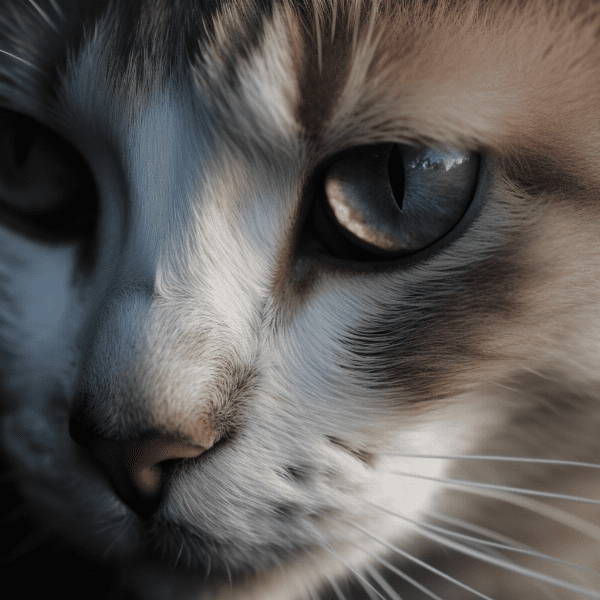
Risk Factors for Cat Eye Cancer
While the exact cause of cat eye cancer is unknown, several risk factors can increase a cat’s likelihood of developing the disease. Understanding these risk factors can help cat owners take proactive measures to prevent the disease or detect it early on.
Breed
Certain breeds of cats, such as Siamese, Himalayan, and Persian, are more prone to developing eye cancer. However, the disease can affect any breed of cat.
Age
Older cats are more likely to develop eye cancer than younger cats. The disease is most common in cats over ten years old.
Sun Exposure
Excessive exposure to sunlight can increase a cat’s risk of developing eye cancer. Cats that spend a lot of time outdoors, especially in sunny areas, are at a higher risk of developing the disease.
Genetics
Genetics may also play a role in the development of eye cancer in cats. Some studies suggest that certain genetic mutations can increase a cat’s risk of developing the disease.
Conclusion
While some risk factors for cat eye cancer cannot be avoided, there are steps that cat owners can take to reduce their cat’s risk. Limiting sun exposure, avoiding exposure to harmful chemicals, and ensuring that your cat’s immune system is healthy are all essential in preventing eye cancer. Regular checkups with your veterinarian can also help detect the disease early on when it’s most treatable.
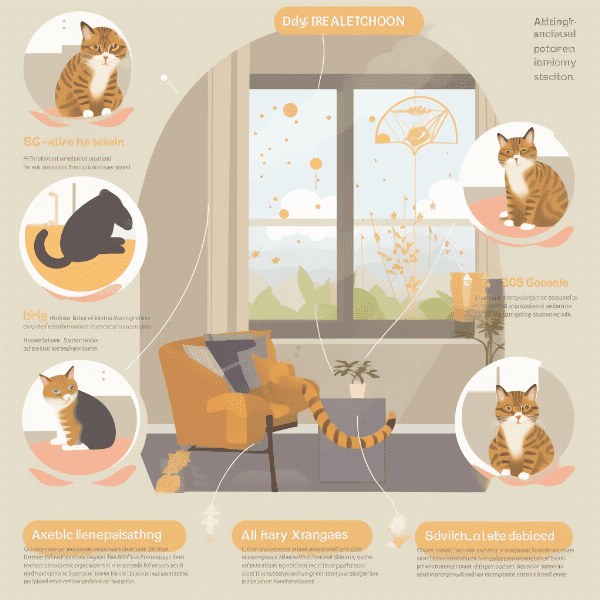
Symptoms of Cat Eye Cancer in Cats
Cat eye cancer can present with various symptoms, which can vary depending on the type and location of the tumor. It’s important to recognize these symptoms early on and seek veterinary attention promptly to ensure the best possible outcome for your cat.
External Symptoms
External symptoms of cat eye cancer may include redness and inflammation of the eye, thick or watery discharge from the eye, and a visible mass or lump on the eye. In some cases, the eye may appear cloudy or have a change in size or shape.
Behavioral Changes
Cats with eye cancer may exhibit behavioral changes such as squinting or keeping the eye closed. They may also rub their eye frequently or paw at it. Cats in pain may become more withdrawn, stop eating, or become more irritable.
Other Symptoms
In some cases, eye cancer can spread to other parts of the body, causing additional symptoms such as weight loss, loss of appetite, and lethargy. If you notice any of these symptoms in your cat, it’s crucial to seek veterinary attention right away.
Conclusion
Recognizing the symptoms of cat eye cancer is essential in ensuring early detection and treatment. If you notice any changes in your cat’s eye, behavior, or overall health, it’s important to consult with your veterinarian right away. Early diagnosis and treatment can significantly improve your cat’s prognosis and quality of life.

Diagnosing Cat Eye Cancer
Diagnosing cat eye cancer typically involves a comprehensive physical exam, a review of the cat’s medical history, and a series of diagnostic tests. The goal of the diagnostic process is to determine the type and location of the tumor and whether it has spread to other parts of the body.
Physical Exam
During a physical exam, the veterinarian will examine the cat’s eyes, looking for any external signs of cancer, such as inflammation, discharge, or a visible mass. They may also palpate the area around the eye to check for any lumps or bumps.
Medical History
The veterinarian will also review the cat’s medical history, asking questions about any symptoms the cat has exhibited and any underlying health conditions that may be relevant to the diagnosis.
Diagnostic Tests
The most common diagnostic tests used to diagnose cat eye cancer include:
Complete Eye Exam
A complete eye exam can help identify the type and location of the tumor. The veterinarian may use specialized tools to examine the eye, such as an ophthalmoscope or slit lamp.
Biopsy
In some cases, a biopsy may be necessary to confirm the diagnosis. A small sample of the tumor tissue is taken and analyzed under a microscope to determine whether the tumor is benign or malignant.
Imaging Tests
Imaging tests, such as X-rays or ultrasound, may be used to determine whether the tumor has spread to other parts of the body. These tests can also help identify any underlying conditions that may be contributing to the development of eye cancer.
Conclusion
Diagnosing cat eye cancer requires a comprehensive approach, including a physical exam, a review of the cat’s medical history, and a series of diagnostic tests. Early diagnosis and treatment can significantly improve the cat’s prognosis and quality of life. If you suspect that your cat may have eye cancer, it’s crucial to seek veterinary attention right away.

Treatment Options for Cat Eye Cancer
The treatment options for cat eye cancer depend on the type and location of the tumor, as well as the stage of the disease. Treatment may involve a combination of medical management, surgical intervention, and radiation therapy.
Medical Management
In some cases, medical management may be used to slow the growth of the tumor or alleviate symptoms. This may involve the use of medications such as steroids or chemotherapy.
Surgery
Surgical intervention is often the primary treatment for cat eye cancer. The goal of surgery is to remove as much of the tumor as possible while preserving the eye’s function. In some cases, the entire eye may need to be removed to prevent the spread of cancer to other parts of the body.
Radiation Therapy
Radiation therapy may be used to destroy cancer cells that cannot be removed surgically. Radiation therapy can be used alone or in combination with surgery or chemotherapy.
Palliative Care
In cases where the cancer has spread and treatment is no longer effective, palliative care may be necessary to keep the cat comfortable and improve their quality of life. This may involve pain management, nutritional support, and other therapies to manage symptoms.
Follow-up Care
After treatment, regular follow-up care is essential in monitoring the cat’s condition and ensuring that the cancer has not returned. Follow-up care may involve regular checkups with the veterinarian, imaging tests, and other diagnostic tests as necessary.
Conclusion
The treatment options for cat eye cancer depend on the type and stage of the disease. While surgical intervention is often the primary treatment, medical management and radiation therapy may also be used. Palliative care may be necessary in cases where treatment is no longer effective. Regular follow-up care is essential in monitoring the cat’s condition and ensuring the best possible outcome.
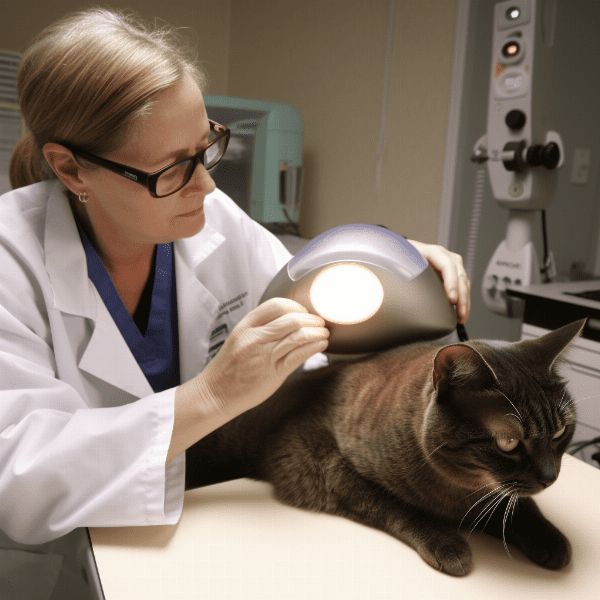
Preventing Cat Eye Cancer
While some risk factors for cat eye cancer cannot be avoided, there are steps that cat owners can take to reduce their cat’s risk of developing the disease.
Limit Sun Exposure
Excessive exposure to sunlight can increase a cat’s risk of developing eye cancer. Cats that spend a lot of time outdoors, especially in sunny areas, are at a higher risk of developing the disease. Limiting sun exposure can help reduce the risk of developing eye cancer. Consider keeping your cat indoors during the hottest part of the day and providing shaded areas outside.
Avoid Exposure to Harmful Chemicals
Exposure to certain chemicals can increase a cat’s risk of developing eye cancer. Chemicals commonly found in pesticides, herbicides, and other environmental toxins have been linked to the development of the disease. Avoid using these chemicals in and around your home, and if you must use them, keep your cat away from the treated area until it is safe.
Keep Your Cat’s Immune System Healthy
Cats with weakened immune systems are more susceptible to developing eye cancer. Conditions that can weaken the immune system include Feline Immunodeficiency Virus (FIV), Feline Leukemia Virus (FeLV), and other underlying health conditions. Keeping your cat’s immune system healthy through regular veterinary care, proper nutrition, and exercise can help reduce the risk of developing eye cancer.
Conclusion
While some risk factors for cat eye cancer cannot be avoided, taking proactive measures to reduce your cat’s risk is essential. Limiting sun exposure, avoiding exposure to harmful chemicals, keeping your cat’s immune system healthy, and regular veterinary checkups can all help reduce the risk of developing eye cancer.
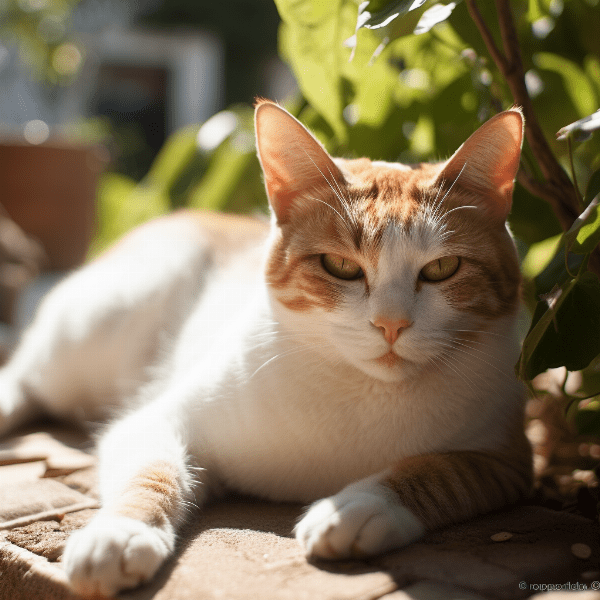
Lifestyle Changes for Reducing Cat Eye Cancer Risk
Making lifestyle changes can help reduce a cat’s risk of developing eye cancer. Here are some changes you can make to help reduce your cat’s risk:
Indoor Living
Keeping your cat indoors can help reduce their exposure to harmful environmental factors such as sun exposure and chemicals. Consider creating an enriching indoor environment for your cat, complete with plenty of toys and opportunities for exercise.
Healthy Diet
Providing your cat with a healthy, well-balanced diet can help support their immune system and reduce their risk of developing eye cancer. Look for high-quality cat food that contains essential nutrients, vitamins, and minerals.
Regular Exercise
Regular exercise can help keep your cat’s immune system healthy and reduce their risk of developing eye cancer. Encourage playtime and provide opportunities for exercise, such as scratching posts, climbing trees, and interactive toys.
Stress Reduction
Stress can weaken the immune system, making cats more susceptible to developing eye cancer. Reduce stress in your cat’s life by providing a comfortable, stress-free environment, plenty of positive interactions, and opportunities for relaxation.
Conclusion
Making lifestyle changes can help reduce a cat’s risk of developing eye cancer. Keeping your cat indoors, providing a healthy diet and regular exercise, and reducing stress can all help support your cat’s immune system and reduce their risk of developing the disease. If you have concerns about your cat’s risk of developing eye cancer, consult with your veterinarian for additional advice and guidance.

Diet and Nutrition for Cat Eye Cancer Prevention
Providing your cat with a healthy diet and proper nutrition is essential in reducing their risk of developing eye cancer. Here are some dietary tips to help prevent cat eye cancer:
High-Quality Cat Food
Providing your cat with high-quality, nutrient-dense cat food is essential in supporting their immune system and reducing their risk of developing eye cancer. Look for cat food that contains high-quality protein, essential vitamins and minerals, and limited amounts of fillers and additives.
Antioxidant-Rich Foods
Antioxidants can help protect cells from damage caused by free radicals, reducing the risk of cancer. Look for cat food that contains antioxidant-rich foods such as blueberries, cranberries, and spinach.
Omega-3 Fatty Acids
Omega-3 fatty acids can help reduce inflammation and support the immune system, reducing the risk of cancer. Look for cat food that contains sources of omega-3 fatty acids such as salmon, tuna, or flaxseed.
Probiotics
Probiotics can help support a healthy gut microbiome, which is essential in maintaining a healthy immune system. Look for cat food that contains probiotics or consider adding a probiotic supplement to your cat’s diet.
Conclusion
Proper nutrition is essential in reducing a cat’s risk of developing eye cancer. Providing your cat with high-quality cat food that contains essential nutrients, antioxidant-rich foods, omega-3 fatty acids, and probiotics can help support their immune system and reduce their risk of developing the disease. Consult with your veterinarian for additional advice and guidance on your cat’s dietary needs.

Regular Checkups and Screenings
Regular checkups and screenings are essential in detecting eye cancer early on when it’s most treatable. Here are some tips for ensuring your cat receives regular checkups and screenings:
Annual Veterinary Exams
Bringing your cat to the veterinarian for an annual exam can help detect eye cancer early on. During the exam, the veterinarian will examine your cat’s eyes and look for any signs of cancer or other health conditions.
Eye Exams
Regular eye exams are essential in detecting eye cancer early on when it’s most treatable. During an eye exam, the veterinarian will use specialized tools to examine the eye and look for any signs of cancer or other health conditions.
Imaging Tests
Imaging tests, such as X-rays or ultrasound, may be used to detect eye cancer or other health conditions. These tests can help identify the type and location of the tumor and determine whether it has spread to other parts of the body.
Conclusion
Regular checkups and screenings are essential in detecting eye cancer early on when it’s most treatable. Bringing your cat to the veterinarian for an annual exam and regular eye exams can help detect eye cancer or other health conditions. Imaging tests may also be used to identify the type and location of the tumor and determine whether it has spread. If you have concerns about your cat’s risk of developing eye cancer, consult with your veterinarian for additional advice and guidance.
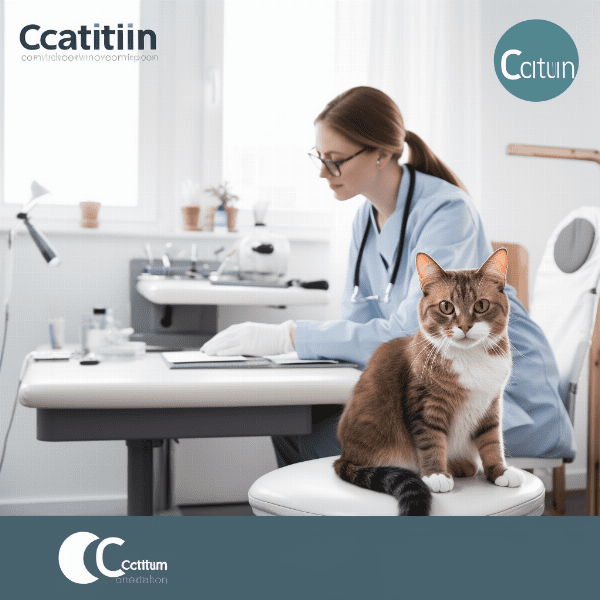
Coping with a Cat’s Eye Cancer Diagnosis
Receiving a diagnosis of eye cancer in your cat can be overwhelming and stressful. Here are some tips for coping with a cat’s eye cancer diagnosis:
Educate Yourself
Educating yourself about your cat’s condition and treatment options can help reduce stress and anxiety. Ask your veterinarian for information and resources on eye cancer and speak with other pet owners who have gone through similar experiences.
Seek Emotional Support
Receiving a cancer diagnosis can be emotionally challenging. Seek support from friends, family, or a support group to help cope with the diagnosis and manage stress.
Focus on Quality of Life
During treatment, focus on maintaining your cat’s quality of life. Provide a comfortable, stress-free environment, plenty of positive interactions, and opportunities for relaxation.
Follow Treatment Plan
Following the treatment plan recommended by your veterinarian is essential in ensuring the best possible outcome for your cat. Work closely with your veterinarian to develop a treatment plan that meets your cat’s individual needs.
Conclusion
Receiving a diagnosis of eye cancer in your cat can be stressful and overwhelming. Educating yourself, seeking emotional support, focusing on quality of life, and following the treatment plan recommended by your veterinarian can all help you cope with the diagnosis and ensure the best possible outcome for your cat. Remember to take care of yourself during this time, and reach out for support when needed.



